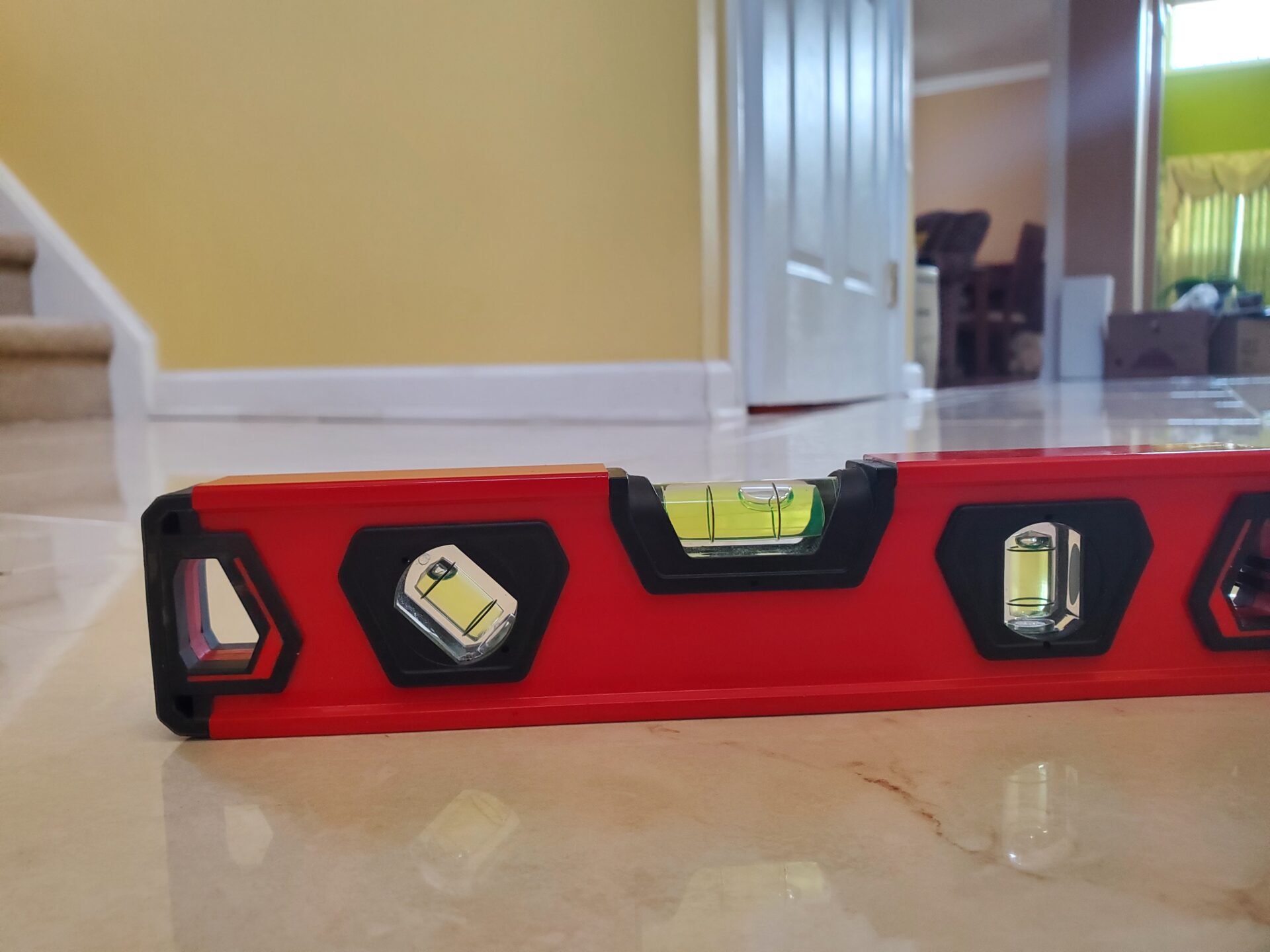Have you noticed that your floors are sloping to one side? Or that certain parts of your floor are bouncy? Have you seen that doors are not closing correctly? These may all be signs of a sloping or sagging floor. Sloping or sagging floors are very common in houses, specially the older they get; however, a professional should be called to determine the cause and make sure that there are no severe structural issues that can be putting your home and those living in it at risk. Additionally, the longer you wait to fix sloped floors, the more difficult the problem may be to fix–and the higher the cost of repair.
What Causes Floors to Slope or Sag?
House settling: This is especially true for older homes. Differential settlement affects the foundation of a home, and thus, affects the floors. Differential settlement occurs when one part of a structure sinks into the ground at a different pace than another part. This type of settling comes with other signs such as cracking of the walls and floors or windows and doors that won’t open or close correctly.
Crawlspace Issues: Crawl spaces are more prone to sinking into the soil and creating issues for your home. Important structures in the crawlspace such as beams and posts will sometimes be exposed to moisture which results in rotting or rusting over time. That leads to sagging, which consequently causes floors to sag.
Floor Joist Issues: Floor joists are an essential part in supporting the floors and the stability of a property. Wooden floor joists are extremely sensitive to moisture damage. Excess moisture results in rotting of the wood, mold growth, and even disintegration.
Window/door Frame Issues: After some time, window and door frames weaken and this causes the floors above them to sink.
Weak Foundation: If the construction of a home isn’t adequate from the beginning, it will begin to show over time. Foundations that are not designed or built properly will fail to support the structure. For example, floor joists that are not designed and installed properly will be faulty and result in weakened floors.
The Slope Can Tell You Where the Issue Is
The way that your floors are sloping can help give you an idea of what the cause may be. However, always keep in mind that a professional will see things that are not obvious to the untrained eye.
If your floor is sloping in a single direction, that is a sign of a settling foundation. Normal settlement is okay, however, differential settlement might cause serious damage to a foundation. The direction of the slope will signal to where the issue is.
Uneven floors around the property can be a sign of faulty joists or girders that support the floors. Additionally, if the sloping is only happening on one floor it can be a result of joists or girders that need to be replaced or repaired.
Finally, if the sloping is happening on all floors of the property, there could be serious structural issues and a professional should be called in to determine the cause and repairs.
When Should You Call A Professional?
Uneven and sloping floors can be a sign of movement in the building. An inspection by a professional engineer can help to identify normal and abnormal issues in a house or building. Looking for signs that tell your foundation is compromised should be a priority. These signs will typically be in the basement or the crawlspace of the property. When the floor joists show signs of rotting, cracking, or damage a professional should be called in.
When a professional is called in, he will conduct a visual inspection. Structural engineers are professionals that are trained to analyze a structure. They are also able to determine the best route for repairs that are cost-effective and long lasting.
Do you need a professional engineer to analyze your properties sagging floors? Do not hesitate to call us at (929)381-0030. At Sabio Engineering, our professional engineers will help determine the cause, and will assist in finding a cost-effective solution to the problem.


